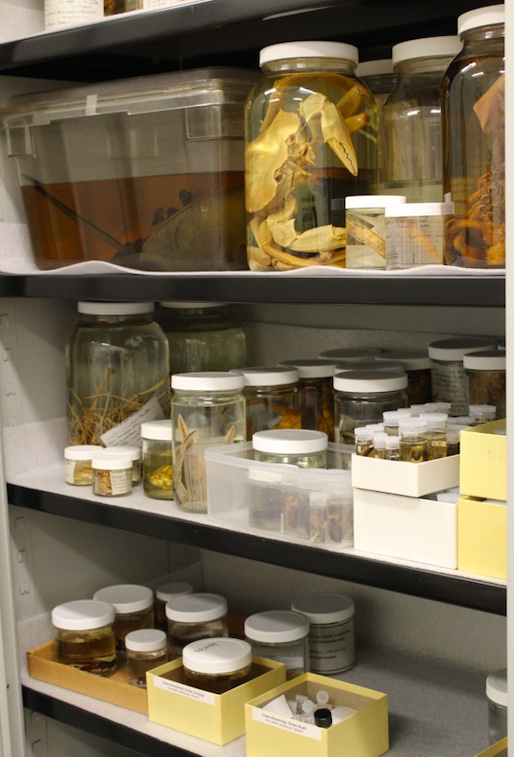Invertebrate Zoology Collection
Overview
 The Invertebrate Zoology Collection is international in scope with an emphasis on
arthropods from semi-arid and arid lands, especially from North America. It is probably
the third largest of the 12 prominent collections in the state of Texas.
The Invertebrate Zoology Collection is international in scope with an emphasis on
arthropods from semi-arid and arid lands, especially from North America. It is probably
the third largest of the 12 prominent collections in the state of Texas.
The collection consists primarily of insects (including an extensive collection of ants), medical/veterinary specimens (endo- and ecto-parasites), and arachnids. Specimens are preserved following standard museum practices by various methods: dry (pinned, point-mounted, enveloped), in ethanol, in buffered formalin, on microscope slides, on SEM stubs, and cooled to -20 or -80°C. The pinned collection contains over 3,200 genera and 7,500 identified species. At least three million specimens are retained as sealed mixed-bulk specimens in ethanol.
The database containing specimen data and photographs is accessible online via the ecdysis portal and the Global Biodiversity Information Facility (GBIF).
Dr. Jennifer Girón is the Curator of the Invertebrate Zoology Collection. For inquiries, please contact her at Jennifer.Giron@ttu.edu.
Estimated total about 4.6 million specimens including:
- Pinned Insects
- Arachnids in ethanol
- Microscope slides (medical/veterinary importance and mites)
- Bulk samples
A few examples of fossil and sub-fossil invertebrates are stored in this collection. Additional fossil material is handled by the Paleontology Division of the Museum. There are currently slightly more than 800 type specimens (mostly paratypes) in the collection. The collection is actively interacting with other departments at Texas Tech University, as well as with other research institutions.
Watch a talk by Dr. Jennifer Girón about the Invertebrate Zoology Collection at the Department of Biological Sciences Seminar Series in October 2022.
Additional Resources
- Background and History of the Collection
- Insect Exhibit: Tiny and Mighty Creatures
- People
- Opportunities
- Curatorial basics
- Our specimens in publications
- Our specimen database via ecdysis
- Our specimen database via GBIF
- Documenting Invertebrates around the Museum using iNaturalist
- Guide to commonly observed invertebrates at the Lubbock Lake Landmark
- FFA Entomology Training
Natural Science Research Laboratory
-
Address
Museum of Texas Tech University, 3301 4th street, Lubbock, TX 79409 -
Phone
806.742.2486 -
Email
nsrl.museum@ttu.edu

